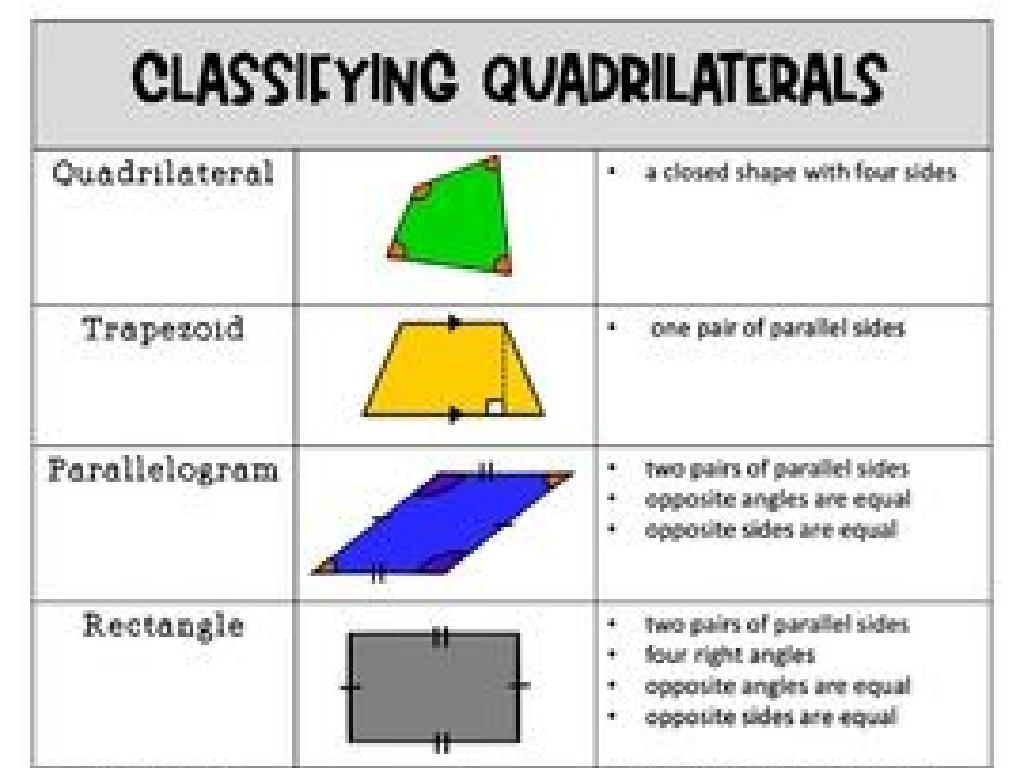Prime Factorization With Exponents
Subject: Math
Grade: Sixth grade
Topic: Number Theory
Please LOG IN to download the presentation. Access is available to registered users only.
View More Content
Prime Factorization with Exponents
– What is prime factorization?
– Breaking down a number into its prime number factors.
– Exponents in factorization
– Using exponents to show repeated prime factors.
– Building blocks of numbers
– Prime numbers as the ‘atoms’ of mathematics.
– Significance in mathematics
– Helps in simplifying fractions, finding LCM, GCD, and more.
|
Prime factorization is a method of expressing a number as the product of its prime factors. This concept is crucial for understanding the structure of numbers and is a fundamental skill in mathematics. Exponents are used in prime factorization to simplify the expression of repeated factors. For example, instead of writing 2 x 2 x 2, we write 2^3. Recognizing numbers as combinations of prime ‘building blocks’ aids in various mathematical operations, including simplifying fractions and calculating the least common multiple (LCM) and greatest common divisor (GCD). This slide aims to introduce the concept and its importance, setting the stage for more in-depth exploration and practice.
Understanding Prime Numbers
– Define prime numbers
– A prime number has only two distinct positive divisors: 1 and itself.
– List prime number examples
– For instance, 2, 3, 5, 7, and 11 are all prime numbers.
– Explore prime number characteristics
– Primes are greater than 1, not divisible by other numbers.
– Recognize primes in factorization
– Prime numbers are the building blocks in prime factorization.
|
This slide introduces the concept of prime numbers, which is fundamental to understanding prime factorization with exponents. A prime number is defined as a natural number greater than 1 that has no positive divisors other than 1 and itself. Provide examples of prime numbers and ensure students can identify them. Discuss the unique characteristics of prime numbers, emphasizing that they cannot be divided evenly by any other numbers except 1 and the number itself. Highlight the role of prime numbers in factorization, setting the stage for learning how to break down composite numbers into prime factors using exponents. Encourage students to start thinking about how prime numbers are the ‘building blocks’ of all other numbers.
Understanding Exponents in Prime Factorization
– Define an exponent
– An exponent tells us how many times to multiply a number by itself.
– Reading and writing exponents
– For 2^3, say ‘2 to the third power’ or ‘2 cubed’. It means 2 x 2 x 2.
– Simple exponent examples
– Example: 3^2 is 3 x 3 = 9.
– Exponents in factorization
– Prime factorization: 8 = 2 x 2 x 2 = 2^3.
|
This slide introduces the concept of exponents, which are crucial in understanding prime factorization. Start by defining an exponent and explaining its notation. Emphasize that the exponent indicates the number of times the base is multiplied by itself. Show how to read and write numbers with exponents, using terms like ‘squared’ and ‘cubed’. Provide simple examples to solidify understanding. Finally, connect exponents to prime factorization by showing how repeated multiplication of the same prime number can be expressed using exponents. Encourage students to practice with different numbers to become comfortable with the concept.
Prime Factorization Basics
– What is prime factorization?
– Breaking down a number into its prime number multipliers.
– Importance of factoring into primes
– Prime factors are the building blocks of numbers, useful in math and cryptography.
– Exploring the Factor Tree method
– A visual method to find prime factors by dividing the number stepwise.
– Applying exponents in factorization
– Simplify factorization using exponents for repeated prime factors.
|
Prime factorization is the process of decomposing a composite number into a product of prime numbers. Understanding this concept is crucial as it forms the foundation for more advanced topics in mathematics, including Greatest Common Divisors and Least Common Multiples. The Factor Tree method is a systematic way to find all the prime factors of a number by dividing the number by its smallest prime factor until all remaining factors are prime. When a prime number appears more than once in the factorization, exponents are used to simplify the expression, making calculations more efficient. Encourage students to practice with different numbers to become comfortable with the process.
Using Exponents in Prime Factorization
– Writing factorization with exponents
– Instead of 2 x 2 x 2, use 2^3 for efficiency
– Simplifying expressions
– Combine like terms: 2^3 x 2^2 becomes 2^5
– Common numbers factorization
– Factor 24 as 2^3 x 3
– Practice with examples
– Try factorizing 36 and 60 in class
|
This slide introduces the concept of using exponents to simplify prime factorization. Explain that exponents are a shorthand way to show how many times a number, called the base, is multiplied by itself. Demonstrate how to combine like terms when simplifying expressions with exponents. Provide examples of prime factorization of common numbers, such as 24, and show how to write it using exponents. Encourage students to practice with examples and prepare a few exercises for them to try, such as factorizing 36 and 60, to reinforce the concept.
Practice: Prime Factorization with Exponents
– Identify prime factors of a number
– Break down numbers into prime factors, e.g., 24 = 2 x 2 x 2 x 3
– Express factors using exponents
– Write repeated factors using exponents, e.g., 24 = 2^3 x 3
– Solve example problems together
– Collaborative class activity
|
This slide is designed for a collaborative class activity where students will practice identifying prime factors of numbers and expressing them using exponents. Start by explaining how to break down a composite number into its prime factors. Then, demonstrate how to use exponents to simplify the expression of repeated factors. Work through problems as a class, encouraging participation and assisting students as needed. This activity will help solidify their understanding of prime factorization and the use of exponents in expressing factors. Possible activity variations include working in small groups, using manipulatives, or creating a game where students race to factorize numbers correctly.
Class Activity: Factorization Challenge
– Break into small groups
– Each group receives a number set
– Factorize using exponents
– For example, 8 = 2^3, not just 2 x 2 x 2
– Present findings to the class
|
This activity is designed to encourage collaborative learning and practice prime factorization with exponents. Divide the class into small groups, ensuring a mix of abilities in each. Provide each group with a unique set of composite numbers to factorize. Remind them to express their answers using exponents where applicable, which helps in understanding the power of prime numbers. After the activity, each group will share their factorization process and results with the class, allowing students to learn from each other’s methods. Possible numbers for the activity could be 24, 36, 48, and 60. Encourage students to check each other’s work for accuracy before presenting.
Wrapping Up: Prime Factorization with Exponents
– Recap prime factorization
– Break down numbers into prime factors raised to powers
– Why master this skill?
– Essential for simplifying fractions and finding LCM, GCD
– Homework: Factorize numbers
– Practice with numbers provided in homework assignment
– Use exponents in homework
– Remember to express repeated factors using exponents
|
As we conclude today’s lesson, remind students of the process of breaking down composite numbers into their prime factors and expressing them with exponents. Emphasize the importance of mastering prime factorization with exponents as it is a foundational skill in mathematics, crucial for simplifying fractions, and finding the least common multiple (LCM) and greatest common divisor (GCD). For homework, assign a list of numbers for students to factorize, ensuring they practice expressing repeated factors using exponents. This will reinforce their understanding and prepare them for more advanced mathematical concepts.






